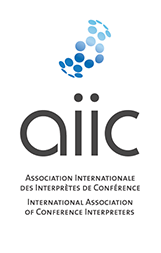
The AIIC A-B-C
A universal system for classifying active and passive working languages
There is a difference between understanding a language and speaking it. This difference lies at the heart of how interpreters classify their working languages.
As well as speaking their mother tongue flawlessly, conference interpreters also have a perfect understanding of one or more other languages and the culture that lies behind them. They may not speak all of those languages equally well, however.
Even in their mother tongue people sometimes have the feeling that they 'cannot find the right word' to express themselves. In a foreign language this is even harder. It is obviously essential for an interpreter to be able 'to find the right word' in all circumstances, even under stress.
How do we classify our working languages?
Interpreters must be able to transpose a message from one language to another very quickly, particularly in simultaneous interpretation, which is very fast. They must understand instantaneously, think rapidly and speak fluently.
Interpreters are able to express themselves better and more fluently in some languages than in others.
───
The languages they speak fluently are called their 'active' languages.
───
Those which they understand perfectly but do not speak as fluently are called their 'passive' languages.
A, B, C languages
Interpreters' working languages are classified according to three categories – A, B, C:
───
The 'A' language is the interpreter's mother tongue (or its strict equivalent) into which they work from all their other working languages in both consecutive and simultaneous interpretation. It is the language they speak best, and in which they can easily express even complicated ideas. It is therefore an active language for the interpreter.
───
A 'B' language is a language in which the interpreter is perfectly fluent, but which is not a mother tongue. An interpreter can work into this language from one or several of their other working languages, but may prefer to do so in only one mode of interpretation, either consecutive or simultaneous (often in 'consecutive' because it is not as fast). It is also considered an active language for the interpreter.
───
A 'C' language is one which the interpreter understands perfectly but into which they do not work. They will interpret from this (these) language(s) into their active languages. It is therefore a passive language for the interpreter.
How this applies to a conference setting
An individual conference or meeting has its own active and passive languages. The languages spoken by participants will be active languages of the conference and those they listen to through interpreters will be passive languages of the conference.
So, if you're organising a conference with interpreters, you will be asked which are the active and which are the passive languages of the conference, i.e. which languages are likely to be spoken by participants and which will need to be interpreted into one or several other languages for the other participants to listen to.
The team of interpreters will be organised so that their working languages correspond to your requirements. This can be a complicated business, especially if there are many languages involved, so you might be well advised to ask a consultant interpreter to help you.
